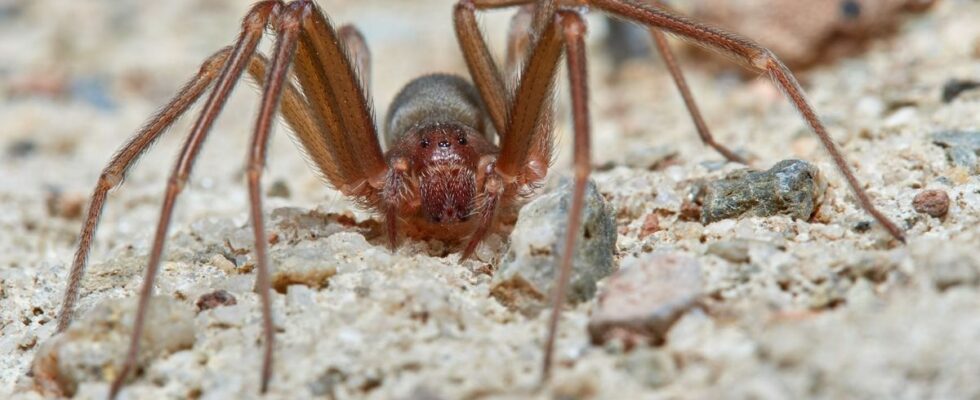Published on
updated on
Reading 3 min.
in collaboration with
Dr Gérald Kierzek (Medical Director)
The violinist spider, a discreet but deadly predator, is spreading terror in Italy after causing two deaths in the space of a few weeks. Is this threat approaching France?
Two deaths in just a few weeks, this is the grim toll that alarms the Italian authorities. The most recent tragedy took place on August 17, 2024, when a 23-year-old man lost his life following a bite from the violinist spider, scientifically known as the Loxosceles rufescens. Native to the Mediterranean basin, this species is known for its venom, capable of causing serious skin necrosis and, in rare cases, death. If this spider has mainly been observed in Italy, is this species also present in France?
A bite that turns into tragedy
The death of the young Italian occurred in the hospital of Bari, in the south of the country. Hospitalized after being bitten a month ago, the victim did not survive the complications caused by the venom. This tragic event follows another death that occurred a few weeks earlier in Palermo, Sicily. These incidents have caused concern among the Italian population, especially since these bites are normally rare and do not always cause serious consequences.
The violinist spider, so-called because of the violin-shaped spot on its back, is generally discreet and avoids human contact. However, when it feels threatened, its bite can cause devastating symptoms, ranging from intense pain to severe skin lesions. Our medical director and emergency physician, Dr. Gérald Kierzek, reminds us that in the event of a bite by this spider, you must act quickly: “It is not considered fatal, but it injects venom that necrotizes tissues, which is called cytolytic, because it is capable of killing cells.”. This results in necrosis, that is, death of the skin, blood vessels, etc.We must react early enough to remove the necrotic part and prevent it from spreading.” continues our expert.
While deaths remain rare, vulnerable people – including young children, the elderly or immunocompromised individuals – are particularly at risk.
The violin spider in France: a discreet but real presence
According to the website “Aranea Spiders of Europe”, the violinist spider is present in Albania, Algeria, Croatia, Cyprus, Egypt, Greece and Crete, Italy, Sardinia, Sicily, Libya, Malta, Morocco, Portugal, Spain, the Balearic Islands, Tunisia and Turkey. And France is not spared. Indeed, the violinist spider is indeed present in the south of France and Corsica, areas where the climate is favorable to its development. However, experts want to be reassuring: cases of bites in France are extremely rare, and deaths even more so.
Asked by The Parisiana spider specialist at the National Museum of Natural History, Christine Rollard declared: “This is not a deadly spider. People do not die from the direct action of the venom, but from infections of necrosis and burns of the skin. These are special individual reactions for people with a fragile immune system. Otherwise, it does not have the venom strong enough to kill a man.“.
Nevertheless, vigilance is advised, particularly with the progression of global warming which could encourage the proliferation of this species in new geographical areas.
Bite, sting, the right reaction when it happens to you
The two deaths in Italy have highlighted the importance of better informing the public about the risks associated with this species. Although the violinist spider remains a potential danger, experts point out that most bites are not fatal and that early medical care can often prevent serious complications.
The dramatic incident, however, provides a useful reminder: in the event of a sting or bite from a spider or insect, it is quite normal to see a local reaction. But any abnormal development or wound that spreads should lead you to a doctor.
“If you notice that the area becomes black, blistered, infected, it is essential to consult quickly, because it is the speed of treatment that counts. Especially if surgery is required or the person needs to be put on antibiotics. It is the speed that determines the prognosis.” says Dr. Kierzek.
The emergency doctor’s tip to know
Finally, our expert shares a little tip that can alert you or reassure you in the event of a spider bite or other sting: “What we do in the emergency room is to draw the outline of the red area with a felt-tip pen. This allows us to see objectively whether it has spread or not.”. A tip to steal, against bites!
